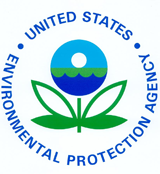
Significant New Use Rule
Advocacy groups have been asking EPA for years to treat nanoscale versions of existing chemical substances as significant new uses of those substances under the Toxic Substances Control Act (TSCA). These types of substances include nanoscale silver, nanoscale TiO2, and nanoscale zinc oxide. Among other things, treating these materials as significant new uses of existing chemical substances would allow EPA to limit their production, require the use of workplace safety measures, require companies to conduct toxicity testing, and require companies to prevent intentional/purposeful releases of the materials to water.
Although its exact parameters have not been released, it appears that EPA intends to issue a proposed significant new use rule under Section 5 of TSCA in January 2011 addressing these issues. While the contours of the rule are difficult to predict, a likely tactic may be to "grandfather in" nanoscale versions of existing chemical substances, but to treat any new attempts to manufacture or use nanoscale versions of existing chemical substances as significant new uses. While such an approach will likely to draw complaints from “newcomers” because companies already manufacturing in the niche would have a distinct competitive advantage, it might be the only workable approach available to EPA. It is virtually impossible to catalogue all existing uses of each nanoscale material already in the marketplace.
Testing Rule
While EPA is already requiring rigorous 90 day in vivo inhalation toxicity testing for certain new nanoscale materials, it appears that the Agency intends to propose a testing rule under Section 4 of TSCA in January 2011 requiring this same type of testing for certain nanoclays, nanoscale aluminum oxide, and nanotubes. Nanoclays and nanoscale aluminum oxide were apparently considered because no country volunteered to be lead sponsor for their testing under the Organization for Economic Cooperation and Development's comprehensive toxicity testing program. Additionally, no manufacturers have submitted premanufacturing notices for nanoclays un the U.S. which might otherwise provide EPA with the chance to require similar testing.
Conducting a 90 day in vivo inhalation test on a nanoscale material is difficult and can cost between $350,000 to $500,000 for each material tested. It will be interesting to see whether EPA’s proposed testing rule will allow for joint testing by manufacturers in order to reduce cost and increase efficiency. At least one group of manufacturers -- the NanoSafety Consortium for Carbon -- is already preparing to ask EPA to use this approach with their nanoscale carbon materials.
Data Collection Rule
Perhaps the broadest proposed rule EPA intends to issue in January 2011 will require manufacturers of nanoscale substances which have not already made formal detailed submissions to EPA to submit detailed EHS data for EPA’s review and consideration. The new proposed rule will be issued under Section 8(a) of TSCA, and will essentially make EPA's prior voluntary Nanoscale Materials Stewardship Program (NMSP) into a mandatory data collection effort. Readers may recall that the NMSP program received lukewarm industry participation, which is apparently resulting in the new mandatory approach.
Fortunately, the TSCA provision authorizing such data-call-ins allows manufacturers to apply to EPA for exemptions in instances where the subject nanoscale materials are only manufactured in small quantities (less than 500 kgs) or are being made solely for research and development purposes.
Finally, for those who might be interested, Section 8(a) of TSCA allows EPA to request information regarding:
(A) The common or trade name, the chemical identity, and the molecular structure of each chemical substance or mixture.
(B) The categories or proposed categories of use of each such substance or mixture.
(C) The total amount of each such substance and mixture manufactured or processed, reasonable estimates of the total amount to be manufactured or processed, the amount manufactured or processed for each of its categories of use, and reasonable estimates of the amount to be manufactured or processed for each of its categories of use or proposed categories of use.
(D) A description of the byproducts resulting from the manufacture, processing, use, or disposal of each such substance or mixture.
(E) All existing data concerning the environmental and health effects of such substance or mixture.
(F) The number of individuals exposed, and reasonable estimates of the number who will be exposed, to such substance or mixture in their places of employment and the duration of such exposure.
(G) … the manner or method of its disposal, and in any subsequent report on such substance or mixture, any change in such manner or method.
This work is licensed under a Creative Commons Attribution-NonCommercial 3.0 Unported.
